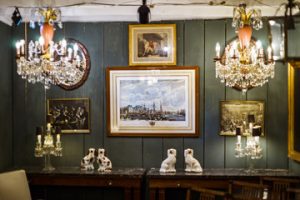
San Jose Cabinet Refinishing is a great option for those who want to freshen up their kitchen without the expense of new cabinets. It’s also less time-consuming than refacing or replacing cabinets.
To begin the refinishing process, remove all hardware from your cabinets. This includes knobs, handles, pulls, and hinges. Then, use a gentle cleaning solution to wipe down all surfaces.
Cost-effective
Cabinet refacing is a great way to give your kitchen a dramatic facelift at a fraction of the cost of replacing cabinets. It involves choosing new doors and drawer fronts to replace your existing ones, while leaving the cabinet boxes intact. There is a wide variety of colors and finishes to choose from, so you can find one that complements the rest of your kitchen design. It is also a more affordable option than replacing cabinets and can be completed in a shorter time than installing new ones.
Another benefit of cabinet refacing is that it is environmentally friendly. Replacing cabinets involves tearing out perfectly functional units and adding them to landfills, while refinishing allows you to modernize your kitchen without contributing to waste. It’s important to keep in mind that refinishing does not add value to your home, but it is a good choice if you want to transform the look of your kitchen without spending too much money.
It’s possible to save even more money by choosing a less expensive type of wood for your cabinetry. Older homes often have cabinets made from premium hardwoods, which outperform mass-produced alternatives in terms of durability and craftsmanship. However, these older cabinets may need refinishing to match the ambiance of your kitchen.
To get the most out of your refinished cabinets, you should clean them regularly using gentle methods. Use a damp cloth to remove dust and dirt, and make sure to dry the surfaces thoroughly to prevent moisture damage. For stubborn stains, you can use a mixture of water and mild dish soap. Avoid using abrasive cleaners or scrubbing pads, as these can cause damage to the finish of your cabinets.
Refinishing your cabinets can be a time-consuming process, so you’ll need to plan ahead and allow plenty of time. This project requires patience and attention to detail, but it’s well worth the effort in the end. Once your cabinets are finished, you’ll be able to enjoy them for years to come. However, it’s important to conduct regular inspections and address any issues promptly to prolong their life.
Time-saving
Cabinet refinishing is a time-saving option for homeowners who want to refresh their kitchens without spending the money and time of a major remodel. It can also be a cost-effective alternative to replacement when the quality of the existing cabinets is acceptable. However, it is important to understand that refinishing requires regular maintenance to avoid damage and fading over time. To keep your cabinets looking their best, you should regularly clean them with a mild degreaser and a soft cloth. Regular inspections can also help identify problems and repair them before they worsen.
Cabinet replacement is a longer process than refinishing, and it can take weeks to complete. In addition, it can be disruptive to your daily routine and make your kitchen unusable for an extended period of time. It’s important to weigh the pros and cons of each approach before making your decision.
The cabinet refinishing process can be a complex undertaking, especially for those with limited DIY experience. However, many professional refinishers offer warranties and guarantees to ensure the job is done correctly and to your satisfaction. If you do the work yourself, mistakes can be costly and may require you to repaint or re-stain the cabinets.
Aside from refinishing the face frames, you can also reface the backs of your cabinet boxes and drawer fronts. To do this, you must remove the inner hardware, including the slides and drawer tracks. Afterwards, you should clean the backs and the inner surfaces of the box and face frame with a mild degreaser to get rid of oil, dirt, and residues. You should also remove the hinges, handles, and knobs.
Once you’ve removed the inner hardware and cleaned the surfaces, you can apply rigid thermofoil or wood veneer to the backs of the face frames. Ensure that the veneer is flush with the rails and stiles of the cabinet box. Using a veneer roller, you can smooth the surface and push out air bubbles. Then, you can use a utility knife or laminate trimmer to cut the veneer to size.
Unlike replacement, refacing allows you to choose from a wide variety of colors and finishes for your cabinetry. This flexibility gives you a more custom look at a lower price point. It can be a good choice if you want to change the layout of your kitchen or add a new feature, such as an island or additional storage.
Environmentally friendly
Cabinet refinishing is an eco-friendly and cost-effective alternative to replacing cabinets. It reduces waste by using existing materials and avoids landfills and production of new materials, making it a great choice for homeowners committed to sustainability. In addition, it is a much faster process than replacing cabinets, which can involve weeks or months of construction and leave your kitchen unusable.
Homeowners can choose from a wide range of colors, finishes, and textures to customize their cabinetry. They can also add door hardware and other finishing touches to personalize their design. For example, pulls are a simple and stylish way to update a cabinet’s look without spending a lot of money. These handles can be purchased from many home improvement stores and are available in different lengths to accommodate various door sizes. Moreover, these handles are also easy to clean. Just be sure to use mild cleaners and avoid harsh chemicals, as they can strip the finish or cause discoloration.
Replacing cabinets involves the purchase of new materials, labor costs, and modifications to your kitchen layout, which can be expensive. As a result, it can be difficult to justify the expense. However, refinishing is a much cheaper option and can recoup 70-80% of its investment at resale. It’s also an excellent choice for outdated cabinets with minor wear and tear that are still structurally sound.
Refacing uses new materials but retains existing cabinet structures and boxes. The doors and drawer fronts are replaced with 3D laminate surfaces, which can be made to mimic wood or other desired materials. It is a sustainable alternative to replacement that reduces waste and cuts down on fossil fuel use. Additionally, it minimizes environmental impacts by reducing the need for transportation and avoiding the disposal of old materials.
Refacing is not a DIY project and requires the help of professionals to ensure a smooth, professional finish. The process can take 3-5 days and will leave your kitchen as a work zone for most of that time. It’s important to inspect your cabinets frequently for damage and address any issues as they arise to keep them looking their best. This will extend the lifespan of your cabinets and prevent the need for costly repairs in the future.
Customizable
Cabinet refinishing is a customizable and budget-friendly alternative to replacing cabinets. This process preserves your existing cabinets, allowing you to choose new color options, hardware, and add-ons to personalize the look of your kitchen. Refinishing can also be done much quicker than replacement, minimizing the amount of time your kitchen is out of commission.
Replacing cabinets requires a significant investment, and the cost of materials and installation can quickly add up. In addition, the replacement process can take weeks and leave your kitchen out of use for a long period of time. Cabinet refinishing, on the other hand, is a more affordable option that can be completed in just a few days. It also reduces waste by utilizing existing materials and avoiding the need for new cabinetry.
One of the main reasons for choosing a cabinet refinishing service is that they can create a custom finish that will last far longer than paint. While it may be possible to do the job yourself, a professional uses specialized techniques, premium materials, and high-quality coatings that are designed to withstand the rigors of daily cooking and cleaning. Additionally, a professional can provide tips and suggestions to help you achieve the look you want while keeping your renovation within your desired budget.
With refinishing, you can also customize the color of your cabinets to brighten up a small space. You can choose from a variety of colors, from neutrals like whites and greys to bold shades of blues, greens, and reds. Moreover, you can add a touch of personality by choosing a unique pattern or texture for your finish. You can even opt for a two-toned design that pairs a lighter bottom with a darker top.
Another way to make your kitchen feel brighter is by adding plenty of natural lighting. Installing dimmable LED strips or puck lights under cabinets can help eliminate dark areas and glare, while adding an attractive glow to your workspace.
Lastly, it’s important to keep your cabinets clean to maintain their pristine appearance. Regularly wiping them down with a cloth or sponge soaked in warm water and mild dish soap can help prevent streaking and smudges. If you are looking for a more thorough cleaning, use a soft brush and non-abrasive cleaners to avoid scratching or damaging the surface.


